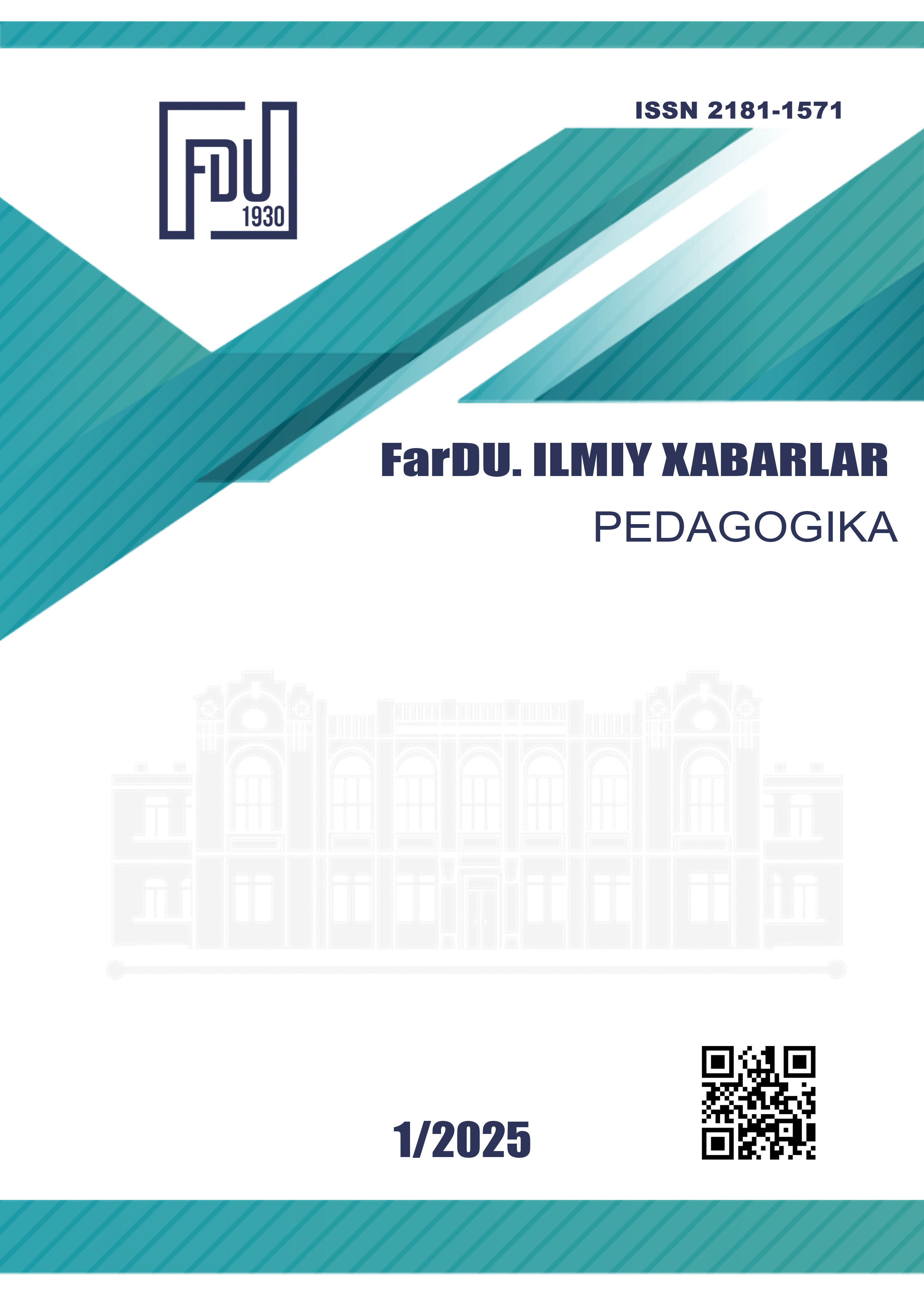EFFECTIVE METHODS OF FORMING STUDENTS' CRITICAL THINKING COMPETENCE
Keywords:
critical thinking, educational technologies, innovative methods, competence, independent thinking, analytical approach, didactic tools, educational process.Abstract
This article analyzes the theoretical and practical foundations of developing critical thinking competence in higher education students. The concept of critical thinking, its essence, role in the higher education system and its place in the modern educational process are revealed. Also, innovative pedagogical methods, educational technologies and didactic tools that serve to form critical thinking are considered. The article may be of practical importance for educators, researchers and specialists who aim to use innovative methods aimed at forming critical thinking in the educational process.
References
Oʻzbekiston Respublikasi Prezidenti Sh.Mirziyoyevning “O‘zbekiston Respublikasi Oliy ta’lim tizimini 2030 yilgacha rivojlantirish konsepsiyasini tasdiqlash to‘g‘risida”gi 08.10.2019-yildagi PF-5847- sonli Farmoni.
Dewey John, 1910, “How We Think”, Boston: D.C. Heath. [Dewey 1910 available online]
Kluster, D. (2005). What is Critical Thinking? Journal of Educational Thought, 41(3), 211-224.
Paul, R., & Elder, L. (2014). Critical Thinking: Tools for Taking Charge of Your Learning and Your Life (3rd ed.). Pearson Education.
Turdaliyev, J. & To‘rayev, S. (2019). Oliy ta’lim tizimida tanqidiy fikrlashni shakllantirish usullari. Pedagogika va psixologiya ilmiy jurnali, 3(2), 45-59.
Brookfield, S. D. (2012). Teaching for Critical Thinking: Tools and Techniques to Help Students Question Their Assumptions. San Francisco: Jossey-Bass. ISBN: 978-0-470-88934-3.
Ennis, R. H. (1987). A Taxonomy of Critical Thinking Dispositions and Abilities. Teaching Thinking Skills: Theory and Practice. J. B. Baron & R. J. Sternberg (Tahr.), New York: W. H. Freeman and Company, 9-26.
Seale, C. (2010). Educational Strategies for Developing Critical Thinking Skills in University Students. Journal of Higher Education Research, 25(3),245-260.
Shakirova, D. M. (2007). Technology for the Shaping of Critical Thinking in Students. Journal of Teaching and Learning, 4(2), 153-161.
Downloads
Published
Issue
Section
License
Copyright (c) 2025 Scientific journal of the Fergana State University

This work is licensed under a Creative Commons Attribution-NonCommercial-NoDerivatives 4.0 International License.
Most read articles by the same author(s)
- , METHODOLOGICAL ASPECTS OF DEVELOPING METHODS OF INDEPENDENT EDUCATIONAL ACTIVITY OF FUTURE TEACHERS IN THE ENVIRONMENT OF DIGITAL EDUCATION , Scientific journal of the Fergana State University: No. 1 (2025): FarDU ilmiy xabarlari jurnali (PEDAGOGIKA)
- , , THE PROBLEM OF LINGUISTIC TAGGING OF LINGUISTIC UNITS IN A PARALLEL CORPUS , Scientific journal of the Fergana State University: No. 1 (2025): FarDU ilmiy xabarlari jurnali (FILOLOGIYA)
- Djalilova Nilufar Dilshodovna, TEACHING FOREIGN LANGUAGE COMMUNICATIVE COMPETENCE TO STUDENTS OF NON-LINGUISTIC UNIVERSITIES , Scientific journal of the Fergana State University: No. 2 (2022): Scientific journal of the Fergana State University
- , THE ESSENCE AND FUNCTIONS OF TUTORING IN FOREIGN EDUCATION , Scientific journal of the Fergana State University: No. 3 (2023): Scientific journal of the Fergana State University (Social humanities sciences)
- Djalilova Nilufar Dilshodovna, THE WAYS OF IMPROVING SPEAKING SKILLS IN ESP CLASSES (INFORMATION TECHNOLOGY) , Scientific journal of the Fergana State University: No. 1 (2024): Scientific journal of the Fergana State University (Social humanities sciences)
- , TECHNOLOGIES FOR PREPARING FUTURE TEACHERS FOR TUTORING , Scientific journal of the Fergana State University: No. 2 (2023): Scientific journal of the Fergana State University (Social humanities sciences)
- Djalilova Nilufar Dilshodovna, USING VIDEO MATERIALS IN DEVELOPING COMMUNICATIVE COMPETENCE OF STUDENTS , Scientific journal of the Fergana State University: No. 1 (2023): Scientific journal of the Fergana State University (Exact and natural sciences)
- Djalilova Nilufar Dilshodovna, VIDEOMATERIALS IN DEVELOPING COMMUNICATIVE COMPETENCE OF STUDENTS , Scientific journal of the Fergana State University: No. 2 (2023): Scientific journal of the Fergana State University (Social humanities sciences)
- Nilufar Mamatqulova, SOME ASPECTS OF APPLICATION OF CREDIT-MODULE SYSTEM IN EDUCATION , Scientific journal of the Fergana State University: No. 1 (2023): Scientific journal of the Fergana State University (Social humanities sciences)
- , SOME ASPECTS OF APPLICATION OF CREDIT-MODULE SYSTEM IN EDUCATION , Scientific journal of the Fergana State University: No. 2 (2023): Scientific journal of the Fergana State University (Exact and natural sciences)

